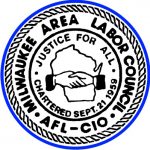Gershwin
Marvin Hamlisch is back in town, and he brought George Gershwin with him. Hamlisch, the Milwaukee Symphony Pops and guest pianist Kevin Cole will survey Gershwin’s music this weekend.
If Gershwin (1898-1937) had started piano lessons a little earlier than age 13, he might not have become the great American songwriter. His ambition was to be a concert pianist; only when his teacher suggested that was unlikely did he turn his attentions mainly to popular music.
Irving Berlin had paved the way, by bringing black Ragtime into general popular music with such songs as Everybody’s Doing It Now and Alexander’s Ragtime Band. Bothwere big hits in 1911, a year after the Gershwin family got its piano.
Gershwin was attuned to the proto-jazz tunes coming out of black minstrelsy. He was also in New York, where he was exposed to every conceivable musical influence and where a young songwriter could get a shot at writing for musical revues. Money could be made on stage, where hit songs were born in the days before radio. George also had the good luck to be the slightly younger brother of Ira Gershwin; the tunesmith had a ready-made wordsmith for a partner.
But George’s first big hit was not with his brother. Irving Caesar wrote the lyrics to Swanee with Gershwin, in 1918. They didn’t write it for pure artistic reasons. Swanee was all business: A song called Hindustan was the signature tune of a popular dance called the one-step. Gershwin wanted to be ready to cash in with a back-up one-step tune when Hindustan faded. He thought the Old South (where he’d never been) might be a more congenial follow-up to exotic India, in terms of subject matter. With Stephen Foster’s Old Folks at Home in mind, Gershwin and Caesar put their heads together. Once they’d decided on the general idea, they worked fast. They sketched out the song during a 15-minute bus ride from Dinty Moore’s Restaurant to Gershwin’s parents’ apartment.
The song got no traction until a year later. The young Gershwin, welcomed at every party for his wit and piano playing, attended one in honor of Al Jolson, during Jolson’s New York stop on a national tour. Jolson, the most famous entertainer in America, heard Gershwin playing Swanee at the party. Jolson put it in his show, and the Jolson touch made it a hit.
Note that the song is not a standard, 32-bar pop tune. It’s 80 bars long and has a trio section, as minuets and marches do. It has some unusual chord changes. (It will get quite a workout this weekend, in the form of an extended Torrie Zito arrangement.) Still, Swanee, in tone was a throwback minstrel song, worlds away from the mature, urban Gershwin style.
Gershwin named Irving Berlin as a prime influence, but the truth is, Berlin could barely play the piano. Gershwin was better schooled and more musically ambitious than Berlin. Both operated in an era with a sharp and apparently unbridgeable divide between highbrow and lowbrow music. Gershwin was interested in closing that gap, and he did, to an extent, in 1924 with Rhapsody in Blue and moreso with his opera, Porgy and Bess, in 1935. (Excerpts from the latter and all of the former are on this weekend’s MSO Pops programs.)
Those two pieces showed that an American pop talent could write big music that drew on the Western classical tradition. Gershwin had a lot to do with a general reassessment of pop culture that is still in force today.
Gershwin, like many Broadway composers, moved to Los Angeles in the 1930s, because Broadway suffered a Depression while Hollywood did not. Perhaps it’s symbolic that Gershwin, the child of Tin Pan Alley, became a great California friend and tennis partner of no less than Arnold Schoenberg, the highest-browed composer of all.
Sources: America’s Songs, by Philip Furia and Michale Lasser, Routledge Press; The House That George Built, by Wilfrid Sheed, Random House; and The American Songbook, by Ken Bloom, Black Dog and Leventhal Publishers.
The MSO Pops, conductor Marvin Hamlisch and pianist Kevin Cole play Gershwin at 8 p.m. Friday and Saturday and 2:30 p.m. Sunday (Feb. 5-7) at Marcus Center Uihlein Hall, 929 N. Water St. Tickets are $25-$93 at the MSO website, at the MSO ticket line (414-291-7605) and at the Marcus box office, 414-273-7206.






















